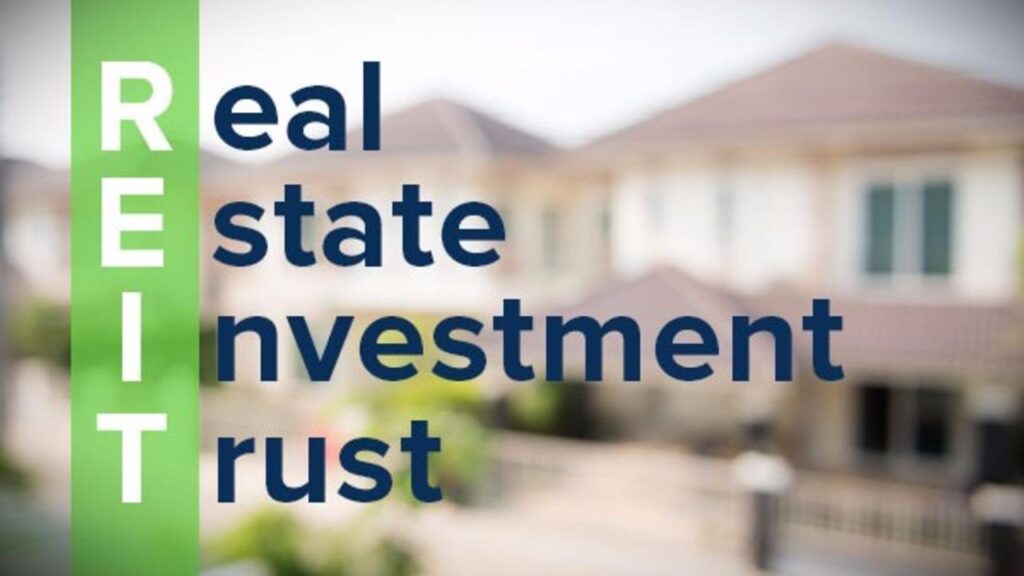
Introduction
This guide is intended to provide the reader with enough high-level information so that they can decide whats involved with getting started in real estate investing and which real estate investing strategy is right for them.
Chapter 1: Introduction to Real Estate Investing
1.1 What is Real Estate Investing?
Real estate investing refers to the act of purchasing, owning, managing, renting, and selling real estate properties for the purpose of generating income, creating wealth, and achieving long-term financial goals. Real estate investments can range from owning a single rental property to a portfolio of multiple properties, including residential, commercial, industrial, and raw land.
1.2 What Are The Benefits of Real Estate Investing
Real estate investing offers numerous benefits.
Real estate investments have the potential to offer high returns, which can be significantly higher than traditional investments such as stocks and bonds.
This is because real estate investments can provide multiple sources of income, including cash flow from rental properties and appreciation in property value over time.
One of the most significant advantages of investing in rental properties is the steady stream of passive income that they can provide in the form of rent. This can be an excellent way to supplement your income and build wealth over time.
Another advantage of real estate investing is the potential for appreciation in property value. Over time, real estate properties can increase in value, which can lead to significant wealth creation for investors.

Real estate investors can also get tax benefits such as tax deductions and depreciation. This can help to reduce the amount of taxes that they owe and increase their overall return on investment.
Diversification is another advantage of real estate investing. By adding real estate to your investment portfolio, you can spread your risk across multiple asset classes and reduce your overall exposure to market volatility.
Finally, real estate investors have more control over their investments compared to other investment vehicles. They can make decisions about property management, renovations, and other aspects of their investments, which can help to increase their returns and overall success.
Overall, real estate investing can be an excellent way to build wealth and achieve financial freedom.

With the potential for high returns, steady cash flow, appreciation in property value, tax benefits, diversification, and control, it’s no wonder that so many investors are turning to real estate as a way to achieve their financial goals.
1.3 What Are The Different Types of Real Estate Investments
Real estate is a diverse industry that encompasses various types of properties and investment opportunities.
Real estate investments can be broadly classified into four categories:
Residential properties include single-family homes, multi-family homes, condos, townhouses, and other types of dwellings. These properties are typically used for personal living purposes and can be owned by individuals or rented out to tenants.

Commercial properties are used for business purposes and include office buildings, retail spaces, hotels, industrial properties, and more. These properties are typically owned by businesses or investors and generate income through rent or other means.

Raw land is another type of real estate investment opportunity that involves purchasing vacant land or land with limited improvements. This type of investment can be risky but can also offer significant returns if the land is developed or sold at a higher value.

Real estate investment trusts (REITs) are a type of investment that pools money from multiple investors to buy and manage income-generating real estate properties. REITs offer investors the opportunity to invest in real estate without the hassle of managing properties themselves. There are other similar group investment strategies but REITs are the easiest to access.

Overall, the real estate industry offers a wide range of investment opportunities for individuals and businesses alike. Understanding the different types of properties and investment options available can help investors make informed decisions and maximize their returns.
1.4 Understanding Real Estate Markets
Real estate markets can be complex and diverse, and it’s important for investors to have a good understanding of the market they plan to invest in. Some key factors to consider when analyzing real estate markets include:
Understanding the supply and demand of properties in a given market is crucial for investors to make informed decisions. This involves analyzing the number of properties available for sale or rent and the number of potential buyers or renters in the market. By doing so, investors can determine whether the market is oversaturated or undersupplied, which can affect the price and potential return on investment.

Location is another critical factor that can determine the value and desirability of a property. Properties located in prime areas such as city centers or near popular amenities like schools, shopping centers, and public transportation tend to be more valuable and in higher demand. On the other hand, properties located in less desirable areas or those with poor access to amenities may have lower values and demand.

Economic factors such as job growth, population growth, and income levels can also impact real estate markets. For instance, areas with high job growth and an increasing population tend to have a higher demand for housing, which can drive up prices. Similarly, areas with higher income levels may have a higher demand for luxury properties, while areas with lower income levels may have a higher demand for affordable housing.

Local regulations such as zoning laws and building codes can also impact real estate investments. These regulations can affect the type of properties that can be built in a given area, the size and design of the properties, and the potential uses of the properties. Investors need to be aware of these regulations and how they can impact their investments, as they can affect the potential return on investment and the overall value of the property.
1.5 Setting Realistic Goals in Real Estate Investing
It’s important for investors to set realistic goals when it comes to real estate investing.

This includes determining what type of properties they want to invest in, how much money they can realistically invest, and what their expected returns are.
Setting clear and achievable goals can help investors stay focused and make informed decisions when it comes to their real estate investments. It’s also important for investors to have a solid understanding of their risk tolerance and investment horizon. This can help them determine what type of real estate investments are best suited for their individual needs and goals.
Chapter 2: How to Get Started with Real Estate Investing
This chapter focuses on the essential steps you need to take when getting started with real estate investing. Whether you’re a beginner or an experienced investor, this chapter will guide you through the process of assessing your finances, establishing your investing team, choosing your investing strategy, creating a plan, and finding your first investment property.
2.1 Assessing Your Finances
Before starting your real estate investment journey, it’s important to assess your financial situation. You need to know how much money you have available to invest, and what your risk tolerance is. This will help you determine the type of property you can afford to invest in, and the amount of leverage you can comfortably take on.
Assessing your finances also involves taking a look at your credit score and debt-to-income ratio.

Your credit score will have a significant impact on the interest rates you’ll be offered on any loans you take out for your investments. A high debt-to-income ratio could also limit your ability to secure financing for your investments.
2.2 Establishing Your Real Estate Investing Team
Real estate investing can be a complex process, and it’s important to have a team of professionals on your side to help you navigate it successfully. This team may include a real estate agent, attorney, accountant, property manager, and contractor. These professionals can provide valuable advice and support throughout the investment process.

When choosing members of your real estate investing team, it’s important to do your research and choose professionals who have experience working with investors in your area. You’ll also want to consider their fees and how they will be compensated for their services.
2.3 Choosing Your Real Estate Investing Strategy
There are several different real estate investing strategies to choose from, and each comes with its own set of benefits and risks. Some popular strategies include buy-and-hold, fix-and-flip, and wholesaling.

Each strategy requires a different level of expertise and financial commitment, so it’s important to choose one that aligns with your goals and resources.
2.4 Creating a Real Estate Investment Plan
Once you’ve assessed your finances, established your team, and chosen your strategy, it’s time to create a real estate investment plan.

Your plan should outline your short-term and long-term goals, your target market, and your investment criteria. It should also include a detailed financial analysis of your investment, including expected cash flow, return on investment, and exit strategy.
2.5 Finding Your First Real Estate Investment Property
Finding your first real estate investment property can be a daunting task, but it’s an essential step in building your investment portfolio. One approach is to work with a real estate agent who specializes in investment properties. They can help you identify properties that meet your investment criteria and may have access to off-market opportunities.

Another approach is to search for properties yourself through online listings, auctions, or networking with other investors. It’s important to thoroughly research any potential investment properties before making an offer, including conducting a property inspection and analyzing the financials to ensure it meets your investment criteria.
Conclusion
Getting started with real estate investing can seem overwhelming, but by following the steps outlined in this chapter, you can set yourself up for success.
- Assessing your finances
- Establishing your investing team
- Choosing a strategy
- Creating a plan, and
- Finding your first investment property …
… are all critical components of successful real estate investing. Remember, patience and persistence are key, and it’s essential to stay informed and adaptable as you navigate the complex world of real estate investing.
Chapter 3: How Do You Finance Real Estate Investments
Real estate investing can be a lucrative endeavor, but it often requires significant upfront capital. One of the biggest challenges for many investors is figuring out how to finance their real estate investments. This chapter will provide an overview of some of the most common financing options available to real estate investors.
3.1 What Are The Most Common Real Estate Financing Options
There are several financing options available for real estate investors, including:
Traditional mortgages are one of the most common ways to finance a real estate purchase. These loans are provided by banks and other financial institutions and typically require a down payment. The interest rates and repayment terms are fixed, which means that the borrower knows exactly how much they will pay each month. This can be helpful for budgeting purposes.

Private loans are another option for financing a real estate purchase. These loans are provided by individuals or private companies and often have more flexible terms than traditional mortgages. However, they may come with higher interest rates, which can make them more expensive in the long run.

Hard money loans are short-term loans that are provided by private lenders. They are typically used for fix-and-flip projects, where the borrower buys a property, renovates it, and then sells it for a profit. Hard money loans often come with high-interest rates and fees, which can make them more expensive than other types of loans.

Finally, some investors choose to purchase real estate properties with cash. This can provide more flexibility and reduce financing costs, as the buyer does not have to pay interest on a loan. However, this option may not be feasible for everyone, as it requires a significant amount of cash upfront.

3.2 Evaluating Real Estate Investment Financing Options
When evaluating financing options, investors should consider factors such as interest rates, repayment terms, fees, and the overall cost of financing. They should also consider the impact that financing costs will have on their returns and cash flow. It’s important to compare different financing options and choose the one that best meets the investor’s needs and goals.
3.3 Calculating Real Estate Investment Returns
Real estate investment returns are typically measured using two metrics: cash on cash return and return on investment (ROI). Cash-on-cash return measures the annual cash flow generated by the investment relative to the amount of cash invested. ROI measures the total return generated by the investment relative to the total amount invested, including both cash invested and any financing costs.
3.4 Assessing Real Estate Investment Risks
All investments come with risks, and real estate investing is no exception. Some common risks associated with real estate investing include:
- market risk
- financing risk
- property management risk, and
- regulatory risk.
It’s important for investors to assess and understand the risks associated with their investments and take steps to mitigate those risks where possible.
3.5 Choosing the Right Real Estate Investment Financing Option
Choosing the right financing option depends on several factors, including the investor’s goals, risk tolerance, and investment horizon. Investors should consider the financing options available to them and choose the one that best aligns with their needs and goals. It’s also important to work with reputable lenders and to carefully review all financing agreements before signing.
Conclusion
There are many different ways to finance real estate investments, each with its own advantages and disadvantages. Traditional bank loans, private money lenders, hard money loans, and cash are all viable options for investors to consider. By understanding the pros and cons of each financing option, investors can make informed decisions and maximize their returns.
Chapter 4: Where To Find Real Estate Investment Opportunities
4.1 Identifying Investment Opportunities
Real estate investment opportunities can come in many forms, including properties that are listed for sale, off-market properties, foreclosures, and distressed properties. Investors can also find opportunities by networking with other investors, real estate agents, and industry professionals.
4.2 Where to Find Properties for Sale
There are several ways for investors to find properties that are currently available for sale.
One option is to search online listings on real estate websites such as Zillow, Redfin, and Realtor.com.
These websites provide detailed information about properties that are currently listed for sale, including their location, price, and features. Investors can use these websites to search for properties that meet their investment criteria, such as location, price range, and property type.
Another option for finding properties is to work with a real estate agent.

Real estate agents have access to a wide range of properties that may not be listed on public websites. They can help investors find properties that meet their investment criteria and negotiate the best possible deal. Real estate agents can also provide valuable advice and guidance throughout the buying process, from finding the right property to closing the deal.
Finally, properties that have been foreclosed on by banks or other lenders may be sold at public auctions.

These auctions provide an opportunity for investors to purchase properties at a discounted price. However, it is important to do thorough research before bidding on a property at a public auction, as there may be liens or other issues that could affect the property’s value. Investors should also be prepared to pay cash for the property and be ready to close the deal quickly.
4.3 Analyzing Properties
Once an investor has identified a potential investment opportunity, they need to analyze the property to determine if it meets their investment criteria. This may involve reviewing financial statements, conducting a property inspection, and analyzing comparable sales in the area.


4.4 Conducting Due Diligence
Before making an offer on a property, investors should conduct due diligence to ensure that they are making an informed decision. This may involve reviewing property records, obtaining a title search, and reviewing any existing leases or contracts.

4.5 Negotiating Deals
Negotiating a real estate deal involves finding a mutually acceptable agreement between the buyer and seller. This may involve negotiating the purchase price, financing terms, and any contingencies or warranties that are included in the sale.

It’s important for investors to work with experienced professionals, such as real estate agents and attorneys, to help negotiate and finalize deals.
Chapter 5: Real Estate Investment Strategies
Real estate investing offers a wealth of opportunities for investors seeking to build their portfolios and generate significant returns. However, to be successful in the real estate industry, it is important to have a clear understanding of the different real estate investing strategies available and how they work. In this chapter, we will discuss some of the most popular real estate investing strategies, including buy-and-hold, fix-and-flip, and wholesaling. Check out this report of a more comprehensive list of real estate investing strategies.
5.1 Buy and Hold Strategy
Buy and hold is a long-term investment strategy in which investors purchase a property and hold onto it for several years, typically with the goal of generating rental income and appreciation over time. This strategy requires a long-term view and a willingness to take on the responsibilities of property ownership, such as property management and maintenance.

5.2 Fix and Flip Strategy
Fix and flip is a short-term investment strategy in which investors purchase distressed properties, renovate them, and then sell them for a profit. This strategy requires a significant amount of capital and expertise in property renovation and marketing.

5.3 Real Estate Investment Trusts (REITs)
Real Estate Investment Trusts (REITs) are a type of investment vehicle that allows investors to pool their money together to invest in a portfolio of properties. REITs offer investors the opportunity to invest in real estate without the responsibilities of property ownership, such as management and maintenance.

5.4 Crowdfunding
Crowdfunding is a relatively new investment strategy in which investors can pool their money together to invest in real estate projects. This strategy allows investors to participate in real estate investing with relatively small amounts of capital and without the responsibilities of property ownership.

5.5 Wholesaling
Wholesaling is a real estate investment strategy in which investors acquire properties at a discount and then sell the property or the contract to other investors for a profit. This strategy requires a deep understanding of the local real estate market and the ability to identify and negotiate deals.

5.6 Short-Term Rentals
The short-term rentals strategy involves purchasing a property and then renting it out on a short-term basis, typically through platforms like Airbnb or VRBO. This strategy can be lucrative, as short-term rentals often command higher rents than long-term rentals. However, investors need to be aware of local regulations and be prepared to manage the property on a daily basis.

5.7 Buy, Rehab, Rent, Refinance, Repeat (BRRRR) Strategy
The BRRRR strategy involves purchasing a distressed property, making renovations or repairs to improve its value, renting it out to generate income, and then refinancing the property to access the equity and repeat the process with another property. This strategy combines elements of the buy and hold and fix and flip strategies, with the goal of generating long-term cash flow and equity growth.
5.8 Commercial Real Estate Investing
Commercial real estate investing involves purchasing properties that are used for business purposes, such as office buildings, retail spaces, and warehouses. This strategy can offer higher rental income and appreciation potential, but also comes with higher upfront costs and management requirements compared to residential real estate investing.

Conclusion
Real estate investing can be a highly lucrative venture, but success requires careful planning and a solid understanding of the different investment strategies available. Whether you are interested in generating passive income through rental properties, flipping homes for quick profits, or wholesaling properties for a quick turnaround, it is essential to choose a strategy that aligns with your goals and resources. By analyzing the benefits and drawbacks of each strategy and implementing best practices, you can maximize your returns and build a successful real estate investment portfolio.
Chapter 6: Analyzing Real Estate Investment Opportunities
Analyzing real estate investment opportunities is a critical step in the investment process. Before making any investment decisions, it is essential to evaluate the property, conduct a financial analysis, and calculate the expected returns. This chapter will cover the key factors that real estate investors need to consider when analyzing investment opportunities.
6.1 Evaluating Investment Opportunities
Investors should evaluate investment opportunities based on factors such as location, property type, market conditions, and potential for appreciation. It’s important to assess the risks and potential rewards of each investment opportunity to make an informed decision.
6.2 Conducting a Property Inspection
Before making a real estate investment, investors should conduct a thorough property inspection to identify any potential issues or repairs needed. This involves hiring a professional inspector to assess the property’s structural integrity, electrical and plumbing systems, and other features.

6.3 Performing a Financial Analysis
Investors should perform a detailed financial analysis of each investment opportunity to estimate potential returns and assess the feasibility of the investment. This involves analyzing factors such as rental income, expenses, financing costs, and potential appreciation in property value.

6.4 Calculating Investment Returns
Investors should calculate their expected investment returns before making an investment decision. This involves estimating potential cash flow, equity growth, and appreciation in property value. It’s important to consider all expenses, including
- property management costs,
- maintenance and repair expenses, and
- financing costs.
6.5 Making an Investment Decision
After evaluating investment opportunities and performing a financial analysis, investors should make an informed investment decision based on their investment goals and risk tolerance. This may involve negotiating a purchase price, securing financing, and closing the deal.
It’s important to make an investment decision based on careful analysis and due diligence to ensure long-term financial success.
Conclusion
Analyzing real estate investment opportunities is a complex process that requires careful evaluation and consideration of multiple factors. By following the steps outlined in this chapter, investors can make informed investment decisions and maximize their returns.
However, it is essential to remember that each investment opportunity is unique and requires a tailored approach to ensure success.
By …
- conducting thorough property inspections,
- performing financial analyses, and
- calculating expected returns …
… investors can make confident and profitable investment decisions.
Chapter 7: Closing Real Estate Investment Deals
Closing a real estate investment deal can be a complicated process, with numerous steps and potential pitfalls to navigate. In this chapter, we’ll explore the key aspects of the real estate closing process and provide tips on how to successfully close on rental properties, fix-and-flip properties, and other types of real estate investments.
7.1 Understanding the Real Estate Closing Process
The real estate closing process is the final step in purchasing a property. It involves transferring ownership from the seller to the buyer and can include several tasks, such as:
- finalizing financing,
- paying closing costs, and
- transferring the title.
Understanding this process is crucial for investors, as it can help you navigate negotiations, manage expectations, and ensure a smooth closing.
7.2 Closing on Rental Properties
Closing on a rental property involves unique considerations, such as:
- reviewing the lease agreement,
- ensuring compliance with landlord-tenant laws,
- and verifying the rental income and expenses.
Investors should work closely with their property management team and attorney to ensure a successful closing on a rental property.


7.3 Closing on Fix-and-Flip Properties
Closing on a fix-and-flip property involves additional considerations, such as:
- verifying the scope of work,
- managing renovation costs, and
- ensuring a quick turnaround for resale.
Investors should have a solid understanding of the local real estate market and work closely with contractors and a real estate agent to ensure a successful closing.


7.4 Working with Real Estate Agents and Attorneys
Real estate agents and attorneys play a critical role in the real estate closing process, providing guidance on:
- legal requirements,
- contract negotiation, and
- property inspections.
Investors should select a qualified and experienced agent or attorney to represent them during the closing process.
7.5 Avoiding Common Closing Pitfalls
Common pitfalls during the real estate closing process include:
- financing issues,
- title issues, and
- disputes over repairs or closing costs.
Investors should work closely with their team to address potential issues and ensure a successful closing.
Conclusion
In conclusion, successfully closing a real estate investment deal requires careful planning, communication, and attention to detail. By understanding the closing process, working with experienced professionals, and avoiding common pitfalls, investors can ensure a smooth and successful closing on their real estate investment.
Chapter 8: Managing Real Estate Investments
Managing real estate investments is an important aspect of the real estate investing process. Effective management of investment properties can increase cash flow, maintain the value of the property, and ensure a successful return on investment. In this chapter, we will discuss the key components of real estate investment management.
8.1 The Importance of Real Estate Investment Management
Real estate investment management involves overseeing and maintaining investment properties to ensure they are operating at their full potential. Proper management can help maximize returns, minimize risks, and protect the property’s value. Neglecting to manage investment properties can lead to missed opportunities for growth and revenue, decreased property value, and even legal consequences.
8.2 Find A Good Property Manager

Hiring a property manager can be an effective way to ensure that investment properties are properly managed. Property managers can handle day-to-day operations, such as
- tenant screening,
- rent collection,
- maintenance, and repairs …
… freeing up the investor’s time to focus on other aspects of the investment process. When selecting a property manager, it’s important to do your due diligence and research potential candidates to ensure they are reputable and experienced.
8.3 Conduct Regular Property Inspections
Regular property inspections are crucial to ensuring that investment properties are being maintained properly.

These inspections can identify potential issues before they become major problems, such as needed repairs or code violations. Inspections can also help ensure that tenants are adhering to lease agreements and that the property is meeting safety standards.
8.4 Maintain Accurate Financial Records
Maintaining accurate financial records is essential to effective real estate investment management. This includes keeping track of income, expenses, and any taxes owed.

Accurate financial records can help investors make informed decisions, assess the profitability of their investments, and ensure compliance with tax regulations.
8.5 Ensure Legal Compliance
Real estate investors must comply with a variety of laws and regulations, such as fair housing laws, building codes, and zoning laws.

Investors should ensure that their properties and management practices are in compliance with all applicable laws to avoid legal issues.
8.6 Tax Planning for Real Estate Investments
Real estate investments can have significant tax implications, and investors should plan accordingly.

This may involve working with a tax professional to identify tax deductions and credits, as well as developing a long-term tax strategy for their real estate portfolio.
Conclusion
Real estate investment management is a critical aspect of the real estate investing process. Effective management involves:
- hiring a reputable property manager,
- conducting regular property inspections,
- maintaining accurate financial records,
- implementing cost-effective maintenance strategies,
- ensuring legal compliance, and
- perform proper tax planning.
By following these key principles, investors can ensure that their investment properties are operating at their full potential.
Chapter 9: Real Estate Investment Risks
Real estate investing can be a profitable venture, but it also comes with inherent risks. Understanding these risks is essential to making informed investment decisions and minimizing potential losses. In this chapter, we will explore the different types of real estate investment risks and how you can mitigate them.
9.1 Market Risk
Market risk refers to the risk of a decline in property values due to changes in the real estate market, such as a decrease in demand or an increase in supply. Investors can mitigate this risk by carefully analyzing the local real estate market and selecting properties that are likely to perform well over the long term.
9.2 Property-Specific Risk
Property-specific risk refers to the risk of damage to the property, such as a fire or natural disaster, or other issues that could negatively impact its value, such as environmental hazards or title disputes. Investors can mitigate this risk by conducting thorough inspections and due diligence before purchasing a property, as well as investing in insurance to protect against property damage and liability.
9.3 Financing Risk
Financing risk refers to the risk of defaulting on a loan or facing financial challenges due to changes in interest rates, lender requirements, or other factors. Investors can mitigate this risk by carefully evaluating their financing options, maintaining adequate reserves, and developing a contingency plan in case of financial challenges.
9.4 Liquidity Risk
Liquidity risk refers to the risk of not being able to sell a property quickly or at a desirable price. Investors can mitigate this risk by investing in properties that are in high demand or have a strong rental market, as well as developing a long-term investment strategy that includes plans for holding onto properties during market downturns.
9.5 Natural Disaster Risk
Natural disaster risk refers to the risk of damage to the property due to natural disasters such as hurricanes, floods, or wildfires. Investors can mitigate this risk by investing in properties in areas with lower risk of natural disasters, as well as investing in insurance to protect against property damage and liability.
Conclusion
Real estate investment risks can be daunting, but they can also be managed with the right knowledge and preparation. By understanding market risk, property-specific risk, financing risk, liquidity risk, and natural disaster risk, you can make informed investment decisions and develop a risk management plan. Remember to conduct due diligence, maintain a solid financial position, and have a solid exit strategy in place. With careful planning and risk management, real estate investing can be a profitable and rewarding venture.
Chapter 10: Real Estate Investing Exit Strategies
One of the most important aspects of real estate investing is having an exit strategy in place. Without a clear plan for exiting your investment, you risk losing money or missing out on potential profits. In this chapter, we will discuss the different options available to real estate investors for exiting their investments, including selling, 1031 exchanges, renting, refinancing, and passing properties to heirs.
10.1 Selling Real Estate Investments
Selling a property is a common exit strategy for real estate investors who want to cash out their investment or move on to other opportunities.

To maximize profits, investors should carefully time the sale of their property and work with a real estate agent or broker to ensure that the property is marketed effectively.
10.2 1031 Exchanges
A 1031 exchange allows real estate investors to defer paying taxes on the sale of a property by reinvesting the proceeds in a similar property. This can be a useful exit strategy for investors who want to avoid paying capital gains taxes and continue building their real estate portfolio.
10.3 Renting Real Estate Investments
Instead of selling a property, some investors choose to rent out their properties to generate rental income.

This can be a long-term exit strategy for investors who want to continue holding onto their properties and earning passive income.
10.4 Refinancing Real Estate Investments
Refinancing a property involves replacing an existing mortgage with a new one that has better terms, such as a lower interest rate or longer repayment period. This can be a useful exit strategy for investors who want to free up cash flow, lower their monthly mortgage payments, or access equity in their property.
10.5 Passing Real Estate Investments to Heirs
Investors can also pass their real estate investments to their heirs as part of their estate planning strategy.

This can be a useful way to transfer wealth to the next generation while minimizing estate taxes and ensuring that the property remains within the family.
Conclusion
Having a clear exit strategy is crucial for successful real estate investing. In this chapter, we have explored the different options available for exiting a real estate investment, including selling, 1031 exchanges, renting, refinancing, and passing properties to heirs. Each option has its own benefits and drawbacks, and the choice will depend on factors such as market conditions, personal goals, and financial considerations. By understanding these options and planning ahead, investors can maximize their returns and minimize their risks when exiting their real estate investments.
Chapter 11: Scaling Your Real Estate Investments Introduction
Scaling your real estate investments means taking steps to grow your real estate portfolio and increase your revenue potential. This requires careful planning, smart decision-making, and a willingness to take calculated risks. In this chapter, we will explore some of the key strategies that can help you scale your real estate investments:
- developing a growth plan,
- leveraging equity,
- partnering with other investors, and
- investing in REITs.
We will also examine some common mistakes to avoid as you seek to expand your real estate portfolio.
11.1 Developing a Real Estate Investment Growth Plan
Developing a growth plan is a critical first step in scaling your real estate investments. This involves setting clear goals and objectives, evaluating your current portfolio and resources, and identifying potential growth opportunities. Your growth plan should include a timeline, budget, and specific strategies for acquiring new properties, increasing rental income, and expanding your network of contacts.
11.2 Leveraging Equity to Acquire New Properties
Leveraging equity is a popular strategy for acquiring new properties and scaling your real estate investments. This involves using the equity you have built up in existing properties to secure financing for new acquisitions. By borrowing against the value of your existing properties, you can access the funds you need to invest in new properties, without having to come up with a large down payment.
11.3 Partnering with Other Investors
Partnering with other investors is another effective way to scale your real estate investments. This can involve:
- forming joint ventures,
- investing in syndicates or private equity funds, or
- pooling your resources with other investors to acquire larger properties or portfolios.

Partnering with other investors can help you share the financial risk, access new resources and expertise, and achieve economies of scale.
11.4 Investing in Real Estate Investment Trusts (REITs)
Investing in REITs is another popular strategy for scaling your real estate investments. REITs are publicly traded companies that own and manage income-producing real estate properties.
By investing in REITs, you can access a diversified portfolio of properties, without having to manage them yourself. REITs also offer the potential for regular dividend income and the possibility of capital appreciation.
11.5 Avoiding Common Real Estate Investment Growth Mistakes
As you seek to scale your real estate investments, it is important to avoid common mistakes that can derail your growth plans. These include:
- overextending yourself financially,
- failing to conduct due diligence on potential properties, and
- neglecting your existing properties in pursuit of new acquisitions.
By staying focused on your growth plan, being realistic about your resources and capabilities, and avoiding common pitfalls, you can successfully scale your real estate investments and achieve your financial goals.
Conclusion
Scaling your real estate investments requires careful planning, smart decision-making, and a willingness to take calculated risks. Whether you are leveraging equity, partnering with other investors, or investing in REITs, it is important to have a clear growth plan in place, evaluate potential opportunities carefully, and avoid common mistakes that can derail your growth plans. By following the strategies outlined in this chapter and staying focused on your goals, you can successfully scale your real estate investments and achieve long-term financial success.
Chapter 12: Real Estate Investing in Different Geographical Regions
Investing in real estate can be a lucrative venture, but it’s essential to understand that real estate markets can vary significantly by region.
Different areas have unique economic and demographic factors that can impact the real estate market’s performance. Therefore, to be a successful real estate investor, it’s important to have a comprehensive understanding of different geographical regions and the factors that drive their real estate markets.
This chapter provides an overview of how to approach real estate investment in different regions, including urban, suburban, and rural areas. The chapter also covers how to adapt your real estate investing strategy to fit different regional markets.
12.1 Understanding Regional Real Estate Markets
Before investing in any real estate market, it’s crucial to understand the regional market’s performance and drivers. Regional real estate markets can be influenced by factors such as:
- population growth,
- employment rates,
- income levels, and
- other economic and demographic factors.

It’s important to research and analyze data about the regional market to assess the potential investment opportunity fully.
12.2 Investing in Urban Real Estate Markets
Investing in urban real estate markets can be an attractive option due to the high population density and the abundance of amenities available. However, investing in urban areas can come with higher price points and greater competition for properties.

Therefore, it’s essential to conduct thorough research and analysis to find investment opportunities that align with your investment goals and budget.
12.3 Investing in Suburban Real Estate Markets
Investing in suburban real estate markets can offer a balance between urban and rural investment opportunities. Suburban areas typically have lower price points and offer access to amenities and quality schools. Additionally, suburban areas may have less competition for properties than urban areas.

However, it’s important to note that suburban areas can be sensitive to economic downturns, and the availability of amenities can vary widely.
12.4 Investing in Rural Real Estate Markets:
Investing in rural real estate markets can provide access to properties with lower price points and a slower pace of life. Rural areas may also have unique investment opportunities such as farmland and timberland.

However, it’s important to note that rural areas can come with limited access to amenities and services and lower property appreciation rates.
12.5 Adapting Your Real Estate Investing Strategy to Different Geographical Regions
One of the keys to successful real estate investing is adapting your strategy to fit the regional market you’re investing in. This can include factors such as:
- the type of property,
- financing options, and
- marketing tactics.
It’s important to conduct research and analysis to understand the regional market’s specific needs and opportunities.
Conclusion
Investing in real estate in different geographical regions can offer unique opportunities and challenges. Therefore, it’s essential to have a comprehensive understanding of the regional market’s performance and drivers. By conducting thorough research and analysis, adapting your investment strategy to fit the regional market, and avoiding common mistakes, you can position yourself for success in any real estate market.
Chapter 13: Real Estate Investing as a Business
Real estate investing has the potential to provide significant financial returns, but it can also be a complex and challenging undertaking. As such, many investors treat real estate investing as a business, leveraging a range of business strategies to maximize their success. In this chapter, we explore what it means to treat real estate investing as a business and the key steps involved in setting up and growing your real estate investing business.
13.1 Treating Real Estate Investing as a Business
To succeed in real estate investing, it’s essential to take a business approach. This involves developing a business plan, creating systems and processes, and tracking financial performance.

Treating real estate investing as a business means dedicating time, resources, and effort to make it profitable, just like any other business.
13.2 Setting Up Your Real Estate Investing Business
One of the first steps to treating real estate investing as a business is to set up a legal entity for your investment activities. This can include registering your business with the state, obtaining the necessary licenses and permits, and creating a business structure that protects your personal assets. You may also need to set up an accounting system, establish a business address, and create a website.
13.3 Managing Your Real Estate Investing Business Finances
Effective financial management is critical to the success of any business, including real estate investing. This involves setting up a bookkeeping system, tracking expenses, and managing cash flow.

You may also need to secure financing, manage debt, and develop a system for evaluating and managing risk.
13.4 Marketing Your Real Estate Investing Business
To attract potential investors, partners, and clients, it’s essential to market your real estate investing business effectively. This can include developing a marketing plan, creating a website and social media presence, and building a strong personal brand.

Networking and building relationships with other real estate professionals can also help to raise your profile and attract new business.
13.5 Growing Your Real Estate Investing Business
As your real estate investing business grows, you may need to develop new strategies and systems to support continued success.

This can include expanding your team, scaling your operations, and leveraging technology to improve efficiency. It’s also important to continue to invest in your education and professional development to stay ahead of trends and changes in the industry.
Conclusion
Treating real estate investing as a business can help you achieve your financial goals and maximize your returns. By taking a strategic, systematic approach and focusing on key areas such as finance, marketing, and growth, you can build a successful and sustainable real estate investing business.
Chapter 14: Real Estate Investing for Retirement Introduction

Real estate investing can be a great way to plan for retirement.
By investing in income-generating properties, investors can enjoy a steady stream of passive income during their golden years. In this chapter, we will explore different real estate investing strategies that can help build wealth for retirement.
14.1 Understanding Retirement Real Estate Investing
Real estate investing for retirement involves making strategic investments in income-generating properties that can provide a steady stream of passive income during retirement. These investments can include rental properties, real estate investment trusts (REITs), and crowdfunding real estate to name just a few.
14.2 Investing in Rental Properties for Retirement Income
One popular strategy for retirement real estate investing is investing in rental properties. By owning rental properties, investors can generate passive income through rent payments.

Additionally, the properties can appreciate in value over time, providing investors with additional wealth-building opportunities.
14.3 Investing in Real Estate Investment Trusts (REITs) for Retirement Income
Another strategy for retirement real estate investing is investing in real estate investment trusts (REITs). REITs are companies that own and manage income-generating properties such as apartments, hotels, and office buildings. Investors can purchase shares in these companies and receive a portion of the income generated by the properties in the form of dividends.
14.4 Investing in Crowdfunding Real Estate for Retirement Income
Crowdfunding real estate is a relatively new form of real estate investing that allows investors to pool their money together to invest in large real estate projects.

This can include investing in commercial properties such as shopping centers, apartment buildings, or office buildings. By investing in crowdfunding real estate, investors can diversify their real estate portfolio and potentially generate high returns.
14.5 Managing Your Real Estate Investments for Retirement
Managing real estate investments for retirement requires careful planning and management. Investors must stay on top of their properties, manage tenants, and ensure that they are generating a steady income.

Additionally, investors must ensure that they are taking advantage of tax benefits and other strategies to maximize their returns.
Conclusion
Real estate investing can be a great way to plan for retirement. By investing in income-generating properties, investors can generate passive income and potentially build wealth over time. Whether through rental properties, REITs, or crowdfunding real estate, investors can tailor their investments to meet their retirement goals. However, managing real estate investments for retirement requires careful planning and management. Investors must stay on top of their properties and ensure that they are generating steady income while taking advantage of tax benefits and other strategies to maximize their returns.
Chapter 15: Real Estate Investing for Wealth Building
Real estate investing has long been known as a vehicle for building wealth. Investors looking to create long-term wealth through real estate investing can benefit from a variety of strategies. In this chapter, we will explore some of the best real estate investment strategies for wealth building.
15.1 Understanding Wealth Building Through Real Estate Investing
Wealth building through real estate investing involves acquiring properties that will appreciate in value over time, generate a stream of passive income, and use the equity from those properties to invest in additional properties. This strategy can be used to build wealth over time, with each property acting as a stepping stone to the next.
15.2 Investing in Appreciating Real Estate Markets
One of the best ways to build wealth through real estate investing is to invest in properties in appreciating markets.

Appreciating markets are those in which property values are expected to rise over time, providing investors with the opportunity to generate significant returns on their investments.
15.3 Investing in Emerging Real Estate Markets
Investors can also build wealth by investing in emerging real estate markets.

Emerging markets are those that are poised for growth but have not yet reached their full potential. Investing in these markets early can provide investors with the opportunity to acquire properties at a lower cost and benefit from significant appreciation over time.
15.4 Investing in Multi-Family Properties for Wealth Building
Investing in multi-family properties can also be a great strategy for building wealth through real estate investing.

Multi-family properties provide investors with the opportunity to generate significant rental income, while also benefiting from appreciation in the value of the property over time.
15.5 Managing Your Real Estate Investments for Wealth Building
To successfully build wealth through real estate investing, it is important to manage your investments effectively. This includes:
- selecting the right properties to invest in,
- managing your finances effectively, and
- working with a team of professionals who can help you achieve your investment goals.
Conclusion
Real estate investing can be a powerful tool for building long-term wealth.
By investing in:
- appreciating real estate markets,
- emerging markets,
- multi-family properties, and
- managing investments effectively …
… investors can build wealth over time through real estate investing.
With the right strategy and a commitment to managing investments effectively, real estate investing can provide investors with significant returns over the long term.
Chapter 16: Real Estate Investment Mistakes to Avoid
16.1 Failing to Conduct Due Diligence
Investors who fail to conduct thorough due diligence before purchasing a property risk buying a property with hidden issues or liabilities. To avoid this mistake, investors should conduct thorough inspections, research zoning and permitting regulations, and review property records before making a purchase.
16.2 Overpaying for Properties
Overpaying for a property can erode profits and negatively impact investment returns. Investors should carefully analyze comparable sales and market trends to ensure that they are paying a fair price for a property.
16.3 Ignoring Market Trends
Real estate markets are constantly evolving, and failing to stay up-to-date on market trends can lead to poor investment decisions. Investors should regularly analyze market data and trends to make informed investment decisions.
16.4 Poorly Managing Properties
Poor property management can result in a range of issues, including tenant turnover, increased maintenance costs, and decreased property value. Investors should carefully screen and select tenants, conduct regular maintenance and repairs, and establish clear policies and procedures for managing their properties.
16.5 Underestimating Expenses
Real estate investments come with a range of expenses, including property taxes, insurance, maintenance, and repairs. Investors who underestimate these expenses risk not having enough cash flow to cover their costs or experiencing unexpected financial challenges. To avoid this mistake, investors should carefully analyze all potential expenses before making a purchase and develop a comprehensive budget to guide their investment strategy.
16.6 Failing to Account for Vacancies and Tenant Turnover
Vacancies and tenant turnover can significantly impact the cash flow of a rental property. Investors should factor in the potential for vacancies and tenant turnover when evaluating the potential returns of a property.
16.7 Poor Financing Decisions
Choosing the wrong financing option or not securing financing at favorable terms can significantly impact the potential returns of a real estate investment. Investors should carefully evaluate their financing options and choose the option that aligns with their investment goals.
16.8 Overleveraging
Taking on too much debt to finance a real estate investment can lead to financial difficulties and even bankruptcy in the event of market downturns or unexpected expenses. Investors should carefully consider their debt-to-equity ratio and avoid overleveraging.
16.9 Not Having an Exit Strategy
Investors should have a clear exit strategy for their real estate investment, whether it is selling the property or refinancing the debt. Failing to have an exit strategy can leave investors without a plan in the event of changing market conditions or other unforeseen circumstances.
Chapter 17: Real Estate Investment Resources
Real estate investing is a dynamic field that requires investors to stay up-to-date on industry trends, best practices, and new investment opportunities. One way to do this is by taking advantage of the many resources available to real estate investors. In this chapter, we will explore some of the most valuable resources for real estate investors.
17.1 Local Real Estate Investment Associations
Local real estate investment associations are organizations that bring together real estate investors, developers, and other industry professionals to network and share information.

Joining a local real estate investment association can be a useful way to connect with other investors, learn about industry trends and regulations, and access educational resources and training.
17.2 Real Estate Investment Forums
Online real estate investment forums are communities where investors can connect with each other, share information, and ask questions.
Popular real estate investment forums include BiggerPockets, REI Club, and the Real Estate Investing Forum on Reddit.
17.3 Real Estate Investment Publications
There are a range of publications and books that focus on real estate investing, including industry trade magazines, investment newsletters, and online publications.

Some popular real estate investment publications include Real Estate Investment Today, The Real Deal, and Millionacres.
17.4 Real Estate Investment Blogs
Real estate investment blogs are a useful way to access information, insights, and advice from industry experts and experienced investors. Some popular real estate investment blogs include Jim Pellerin and others.
17.5 Real Estate Investment Conferences
Attending real estate investment conferences can be a useful way to network with other investors, learn about emerging trends and strategies, and connect with industry experts.
Some popular real estate investment conferences include the National Real Estate Investor Conference and Expo, the Real Estate Investment World Asia Conference, and the Global Property Market conference.
17.6 Real Estate Investing Podcasts
Podcasts are another great resource for real estate investors, offering valuable insights, strategies, and advice from industry experts.

Some popular real estate investing podcasts include The Real Estate Guys Radio Show, The BiggerPockets Real Estate Podcast, and Real Estate Investing for Cash Flow.”
17.7 Real Estate Investing Mentors
Finally, finding a mentor or coach who has experience in real estate investing can be an invaluable resource for new investors. A mentor can provide guidance, support, and advice based on their own experiences and can help investors avoid common pitfalls and make more informed investment decisions.
17.7 Real Estate Investing Software and Tools
Real estate investing software and tools can help investors analyze investment opportunities, manage their portfolio, and streamline their operations.
Some popular real estate investing software and tools include Innago, Property Radar, and RealPage. These tools may include features such as financial analysis, property data analytics, and portfolio management. Check out the article where we cover over 135 of the best software tool.
Conclusion
As a real estate investor, it is essential to stay informed about industry trends, best practices, and new investment opportunities. The resources outlined in this chapter can help investors access valuable insights and knowledge, connect with other industry professionals, and streamline their operations. Whether you are just starting in real estate investing or have years of experience, taking advantage of these resources can help you achieve your investment goals and build a successful real estate investing career.
Chapter 18: Final Tips for Successful Real Estate Investing
Real estate investing can be a rewarding and profitable venture, but it requires a level of dedication, knowledge, and skill. Here are some tips for successful real estate investing:
18.1 Educate Yourself
To succeed in real estate investment, it’s important to learn about the market, trends, and strategies. Attend seminars, read books, and network with experienced investors to gain valuable insights. This will help make informed decisions and achieve long-term success in a competitive industry.
18.2 Start Small
To start investing in real estate, it’s best to begin with something small like a house. This will help you learn and gain confidence. As you get better, you can try bigger and more complicated investments like an apartment building. It’s important to take your time and be careful so you can make smart choices and reach your goals.
18.3 Build a Network
Building a network of real estate professionals, including real estate agents, brokers, and attorneys, can help you find opportunities, gain market insights, and access financing options.
18.4 Develop a Long-Term Strategy
Real estate investing requires a long-term strategy. Develop a plan that aligns with your investment goals and risk tolerance. Be prepared to adjust your strategy as market conditions change.
18.5 Be Patient and Persistent
Real estate investing can be challenging, and success takes time and effort. Be patient, persistent, and disciplined in your approach. Learn from your mistakes and use them to refine your strategy.
By following these tips, real estate investors can increase their chances of success and achieve their investment goals.
Chapter 19: Conclusion
Real estate investing can be a lucrative and rewarding venture, but it requires dedication, knowledge, and discipline. This guide has provided an overview of the fundamentals of real estate investing, including types of investments, financing options, and common pitfalls to avoid.
Real estate investing is not for the faint of heart. It requires a tremendous amount of knowledge and expertise in various areas, such as market trends, financial analysis, and strategic planning. It’s not just about buying a property and renting it out to tenants.
There are many factors to consider, and the stakes are high. Investors must also stay up-to-date on industry trends, such as the popularity of certain neighborhoods or the emergence of new development projects.
Investors must be able to analyze the financial viability of a potential investment property, taking into account factors such as purchase price, renovation costs, and potential rental income. They must also have a solid understanding of financing options, such as mortgages and loans, and be able to negotiate favorable terms with lenders.
Real estate investing is a long-term game that requires time and effort to see results. Real estate investing can be a challenging but rewarding pursuit.
By combining market knowledge, financial expertise, and strategic planning, investors can increase their chances of success and build a profitable portfolio of properties over time.
Remember to do your research, develop a solid investment strategy, and be patient and persistent in your approach. With careful planning and a commitment to ongoing education, real estate investing can be a valuable addition to your investment portfolio.
Thank you for reading this Ultimate Beginner’s Guide to Real Estate Investing, and we wish you success in your real estate investing journey.
Disclosure: I may receive affiliate compensation for some of the links at no cost to you if you decide to purchase a paid plan. This site is not intending to provide financial advice. This is for entertainment and information only.
Check out the eBook or Paperbook versions













